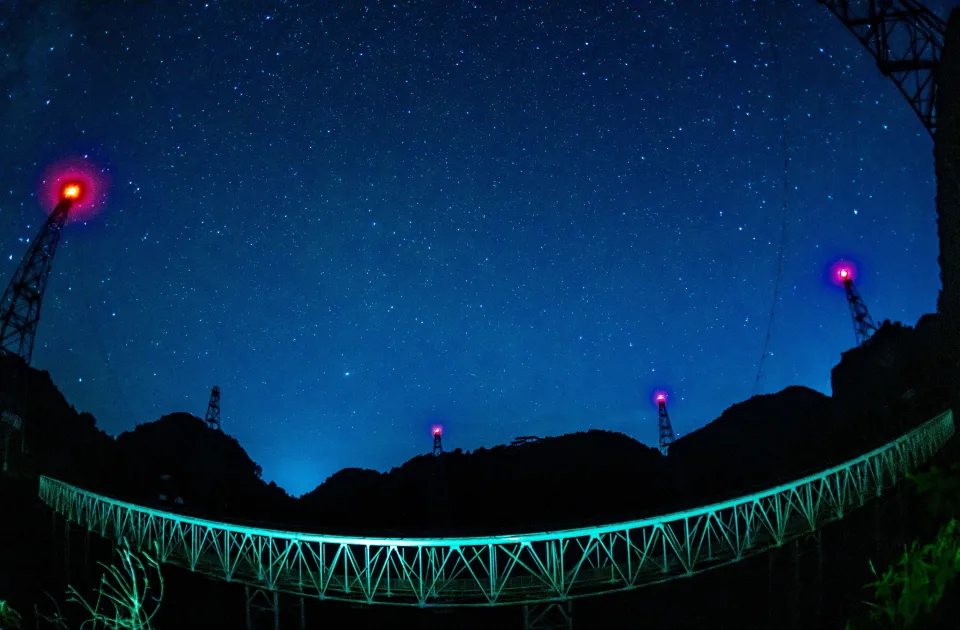Using a huge Chinese telescope, the team detected 1,863 bursts in 82 hours over 54 days from an active fast radio burst source called FRB 20201124A.
Fifteen years after the mysterious pulses from deep space were first discovered, the new observations have challenged received ideas about what causes the signals.
Scientists believe the signals come from collapsed stars – but some have suggested they might be evidence of extraterrestrial civilisations.
The cosmic FRB observations were made in late spring 2021 using the massive Five-hundred-meter Aperture Spherical radio Telescope (FAST) in China
Fast radio bursts are bright pulses of radio emission mere milliseconds in duration, thought to originate from distant galaxies.
Astrophysicist Bing Zhang of the University of Nevada, Las Vegas, said, “These observations brought us back to the drawing board.
“It is clear that FRBs are more mysterious than what we have imagined. More multi-wavelength observational campaigns are needed to further unveil the nature of these objects.”
“This is the largest sample of FRB data with polarisation information from one single source.”
Recent observations of a fast radio burst from our Milky Way galaxy suggest that it originated from a magnetar, which is a dense, city-sized collapsed neutron star (magnet + star) enclosed in extreme magnetic fields
These fields are so strong that they turn the vacuum in space into an exotic plasma composed of matter and antimatter.
The origin of very distant cosmological fast radio bursts, on the other hand, remains unknown – and the new observations leave scientists questioning what they thought they knew about them.
What makes the latest observations surprising to scientists is the irregular, short-time variations of the so-called “Faraday rotation measure”, essentially the strength of the magnetic field and density of particles in the vicinity of the FRB source.
The variations went up and down during the first 36 days of observation and suddenly stopped during the last 18 days before the source quenched.
“I equate it to filming a movie of the surroundings of an FRB source, and our film revealed a complex, dynamically evolving, magnetized environment that was never imagined before,” said Zhang.
“Such an environment is not straightforwardly expected for an isolated magnetar. Something else might be in the vicinity of the FRB engine, possibly a binary companion.”
Young magnetars are believed to reside in active star-forming regions of a star-forming galaxy, but the optical image of the host galaxy shows that – unexpectedly – it’s a metal-rich barred spiral galaxy like our Milky Way. The FRB location is in a region where there is no significant star-forming activity.
Co-author Subo Dong from Peking University said, “This location is inconsistent with a young magnetar central engine formed during an extreme explosion such as a long gamma-ray burst or a superluminous supernova, widely speculated progenitors of active FRB engines.”




GIPHY App Key not set. Please check settings